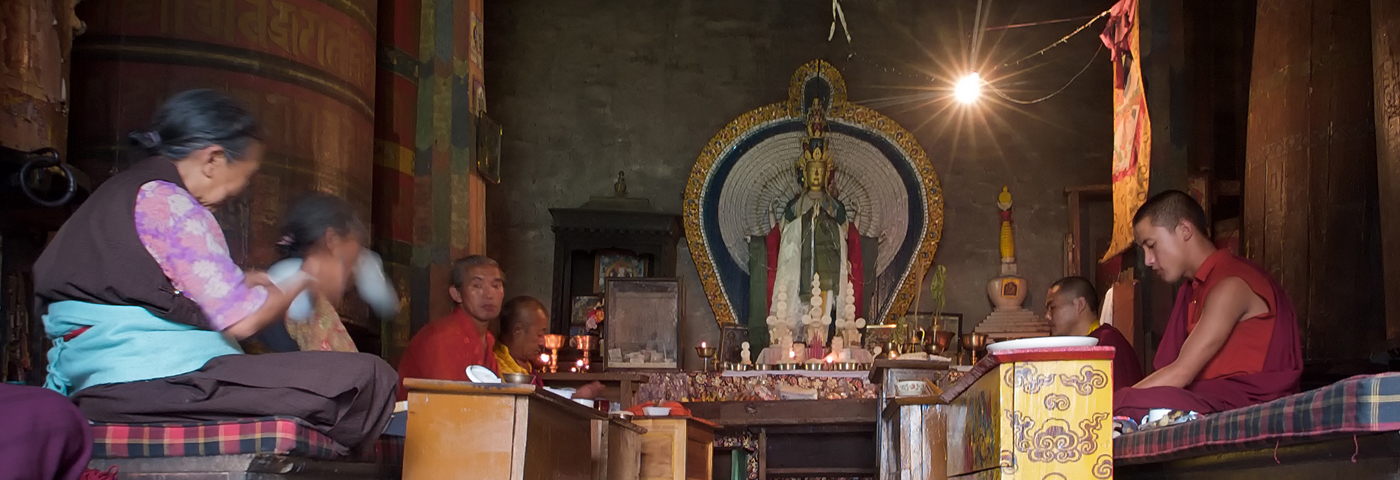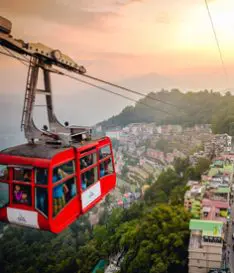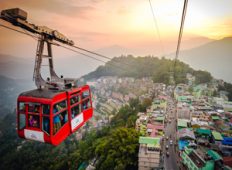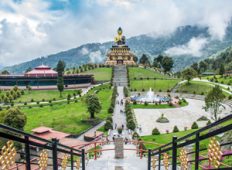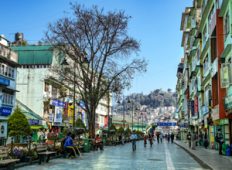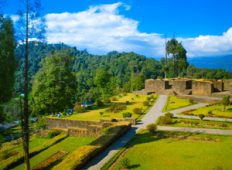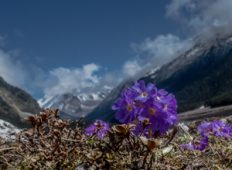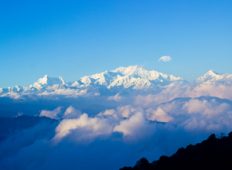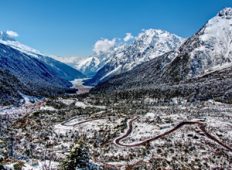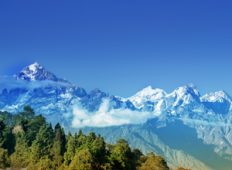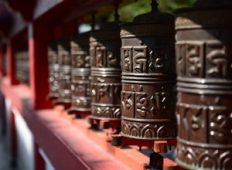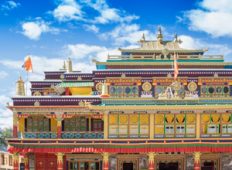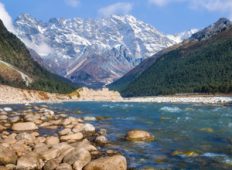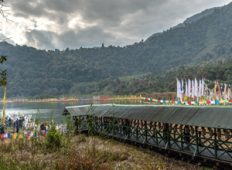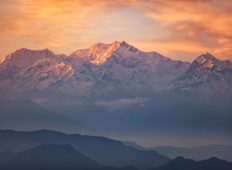TASHIDING MONASTERY GUIDE
Why Should I Visit
Tashiding is one of the oldest monasteries belonging to the Nyingma sect in the tiny Himalayan state of Sikkim. Perched on top of a heart-shaped hill, it overlooks two meandering rivers—Ranthong and Rangit— that snake through the gorgeous valley below. The pristine white peaks of the Kanchendzonga serve as the perfect backdrop to this monastery that was constructed sometime in the early 1700s, during the reign of the third Chogyal of Sikkim.
A steep climb up some stairs leads you to the main entrance of the monastery called Mani Lakhang. Though the main monastery named Chogyal Lakhand was reconstructed after being damaged by an earthquake, several older original structures remain intact. The legendary Thongwa Rangdol, one of the four chortens, built by Lhatsun Chenpo (incarnation of the great Buddhist master Vimalamitra) still stands within the Tashiding Monastery complex. It is believed that the mere sight of this chorten can cleanse one of all his sins. Some of the other structures in the monastery is the butter lamp house and a workshop for stone masonry. Beautifully carved stone tablets bearing various sacred mantras surround the complex.
How Do I Get There
Tashiding, an idyllic hamlet in West Sikkim is located at a distance of around 36 km from Pelling. Hire a cab from Gangtok or take a shared taxi to Pelling from where you can book a cab to take you to Tashiding Monastery.
When Should I Land Up
Every year during the first month of the Tibetan calendar (February/March), Tashiding Monastery celebrates the Bumchu Festival. This unique festival centres around a magical vase containing holy water. The vase, according to believers, has the property of predicting the future depending on the level of water it contains when the monks open it each year. If the vase is more than half full, it signifies natural calamities and if it is lesser than half it indicates a famine. Although, if the level of water is close to half, it symbolizes a year full of peace and prosperity. Once the ceremony is over, the sacred water is distributed amongst devotees who come from far and wide to be a part of the festival.
However, the months of March/ April and September/October are generally considered the best time to visit Sikkim.
In Folklore
The Tashiding monastery is one of the several places in Sikkim associated with Guru Padmasambhava, the Buddhist tantric master visited this part of the Himalayas during the 8th century on his way to Tibet. According to various Buddhist scriptures, Padmasambhava, in his search for an ideal place to meditate shot an arrow through the sky which is supposed to have landed at the exact spot where the monastery is located.
Another legend associates he monastery with the three Buddhist monks who crowned the first Chogyal of Sikkim at Yuksom, the first capital of the erstwhile kingdom of Sikkim. The monks witnessed a dazzling beam of light that emanated from Kanchendzonga and reflected on a hill which is where one of the monks built the Tashiding Monastery. It is also said afterwards, the fragrance of incense wafted through the air while divine music could be heard in the background.
Travel Tips
Maintain silence when you’re inside the monastery and avoid taking photographs when you are in the main prayer hall.

